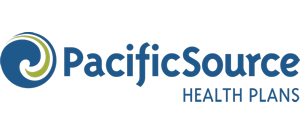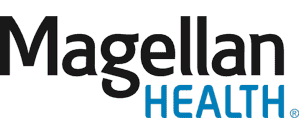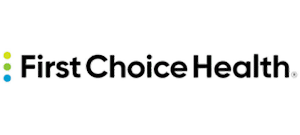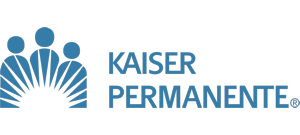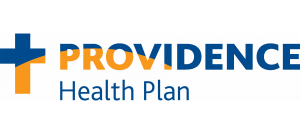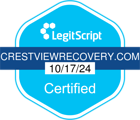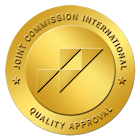For individuals struggling with substance use, the journey toward recovery is rarely a straight path. While harm reduction strategies can provide essential support and reduce the risks associated with drug use, there may come a time when transitioning into a professional treatment setting becomes necessary for long-term wellness.
At Crestview Recovery Center in Portland, Oregon, we understand that recovery looks different for everyone, and we’re here to help individuals and families navigate this complex journey with compassion, clarity, and care. We explore harm reduction vs abstinence, and the effectiveness of harm reduction‐based interventions and abstinence‐based interventions for adults experiencing substance abuse.
Understanding the Drug Overdose Epidemic
The United States is in the grip of a devastating overdose crisis. More than 100,000 lives are lost each year to drug overdoses, and the numbers continue to climb. While opioids are the primary driver of these deaths, other substances, including stimulants and synthetic drugs, are becoming increasingly involved. One major factor contributing to overdose fatalities is the unpredictability of the illicit drug supply. Drugs are often laced with powerful additives like fentanyl or xylazine, increasing both their potency and their danger.
Communities of color (especially Black, Indigenous, and Latinx populations) bear a disproportionate share of this burden due to systemic inequities, limited access to healthcare, and the criminalization of drug use. Harm reduction strategies seek to address these gaps, providing life-saving tools like naloxone, clean syringes, and drug checking kits. These services not only prevent death but also offer a bridge to support and, eventually, recovery.
Harm Reduction vs. Abstinence: Comparing Approaches to Substance Use

What Is Harm Reduction?
Harm reduction is a public health philosophy and set of strategies aimed at minimizing the negative consequences of drug use without necessarily requiring abstinence. It’s rooted in the understanding that drug use has always been part of society, and total cessation isn’t always realistic, or immediately desired, by everyone who uses drugs.
Some of the most common harm reduction practices include:
- Distributing naloxone to reverse overdoses
- Providing clean syringes and safe consumption sites
- Educating users about safer drug practices
- Offering drug testing kits to identify contaminated substances
These strategies protect the health and dignity of people who use drugs, helping them stay alive and connected to support networks.
What Is Abstinence-Based Treatment?
Abstinence-based treatment, on the other hand, focuses on the complete cessation of substance use. The belief here is that addiction hijacks the brain and impairs a person’s ability to make healthy decisions. Once a person detoxes and engages in therapy, their willpower and reasoning begin to return, but only if they stay sober. Abstinence-based programs often include:
- Medically supervised detoxification
- Residential treatment
- Cognitive behavioral therapy (CBT) and dialectical behavior therapy (DBT)
- 12-step or other peer support groups
This model works for many people, especially those seeking to break free from a cycle of addiction and begin a new chapter of their lives with full sobriety.
Controversy Over Harm Reduction in Addiction Recovery

Despite its effectiveness, harm reduction has faced criticism from some circles. Detractors argue that it enables ongoing drug use or discourages people from seeking full treatment. However, research and real-world evidence suggest otherwise.
Harm reduction is often a first step. By building trust, reducing health risks, and offering nonjudgmental support, it lays the groundwork for deeper healing. When people are treated with respect and given the resources to stay safe, they are more likely to seek help when they are ready. In this way, harm reduction doesn’t compete with abstinence-based treatment; it complements it.
Recognizing the Signs It’s Time for Professional Treatment
While harm reduction saves lives, there may come a time when an individual’s health or safety demands a higher level of care. Some key indicators that someone may benefit from transitioning into a professional treatment setting include:
Even with safer use practices, some individuals experience rapid declines in their physical or mental health. Chronic fatigue, infections, frequent illness, paranoia, depression, and suicidal thoughts are all signs that substance use is taking a toll that harm reduction alone cannot address.
Harm reduction focuses on keeping people safe, but it does not aim to eliminate drug use. When an individual expresses a desire to stop using and start over, a rehab program can provide the structured, supportive environment needed to make that goal a reality.
If someone is regularly overdosing, engaging in risky behaviors, or experiencing psychosis or violence during drug use, the situation has reached a critical point. In these cases, professional intervention is not only beneficial, it may be lifesaving.
The Benefits of Professional Addiction Treatment

Transitioning from harm reduction to professional treatment can feel overwhelming, but the benefits are immense.
Withdrawal from substances can be dangerous, even life-threatening. A medically supervised detox programs ensure that individuals are safely and comfortably weaned off substances, reducing the risk of complications. With 24/7 monitoring and clinical oversight, clients are supported through each phase of detox, giving them a strong, stable start to the recovery process.
Every person has a unique story. Addiction counseling, including individual therapy, cognitive behavioral therapy (CBT), dialectical behavior therapy (DBT), and trauma-informed care, helps individuals process their experiences, understand their triggers, and build new coping mechanisms. Treatment plans are tailored to meet each client’s specific needs, helping them uncover the root causes of addiction and begin meaningful healing.
In rehab, clients build community. Whether through group therapy or peer-led support, individuals realize they are not alone. Shared experiences foster deep empathy, and being part of a supportive recovery network, such as an alumni program, can significantly increase motivation and long-term success.
A rehab facility removes distractions and dangerous influences. It offers a safe, consistent setting where individuals can focus solely on healing and self-discovery. The routine and predictability help reduce anxiety and allow space for positive habits to form and take root.
Recovery doesn’t end when treatment ends. Crestview Recovery Center helps clients develop aftercare plans, including outpatient therapy, sober living, support groups, and job assistance. These plans ensure a smoother transition into everyday life and provide the continued structure and support needed to sustain sobriety.
Harm Reduction and Professional Care: Two Parts of the Same Whole
It’s not harm reduction or abstinence – it’s both. These approaches work together to meet people where they are and help them move forward at their own pace. Here’s how they can be integrated:
- Initial Engagement Through Harm Reduction: When someone isn’t ready to stop using, harm reduction keeps them safe and alive. It fosters trust and human connection.
- Transition to Treatment: When a person expresses readiness or their health declines, professionals can guide them into a treatment setting.
- Continued Harm Reduction During and After Treatment: Even in abstinence-based recovery, elements of harm reduction – like medication-assisted treatment (MAT) or ongoing access to Naloxone remain crucial.
Healthcare providers, clinicians, and peer support workers must be equipped with harm reduction training to navigate this continuum. By avoiding coercion, discrimination, and moral judgment, we make recovery more accessible.
Principles of Harm Reduction in a Clinical Setting
In clinical environments, harm reduction is not a fringe philosophy – it’s a compassionate, evidence-based practice. According to the National Harm Reduction Coalition, harm reduction:
- Recognizes that drug use is complex and exists on a continuum
- Respects the rights and dignity of people who use drugs
- Encourages positive change, even if it doesn’t include abstinence
- Prioritizes self-determination
- Reduces stigma, shame, and isolation
Clinicians trained in this approach can better support patients, reduce overdose rates, and increase access to care.
Why Harm Reduction Services Are Needed Now More Than Ever

The overdose crisis isn’t slowing down. With synthetic opioids like fentanyl flooding the drug supply and powerful sedatives like xylazine being used more frequently, we need every tool available to prevent harm.
While harm reduction services are crucial, they are not a substitute for full-spectrum care. Facilities like Crestview Recovery Center fill the gap. Our team works with individuals at every stage – whether they’re currently using, contemplating change, or ready for full treatment.
When You’re Ready, Crestview Recovery Center in Portland is Here
The truth is, sobriety is just one pathway to recovery. Harm reduction is another. The key is knowing what you need and when you need more.
If you or someone you love is currently using substances, harm reduction can save your life. And when you’re ready for something more, when you’re ready to change your story, Crestview Recovery Center is here to walk with you every step of the way.
If you or a loved one is struggling with substance use, don’t wait. Whether you’re seeking harm reduction support or ready for full addiction treatment, Crestview Recovery Center in Portland, Oregon, is here to help. Contact us today to learn more about our compassionate, comprehensive approach to care.















